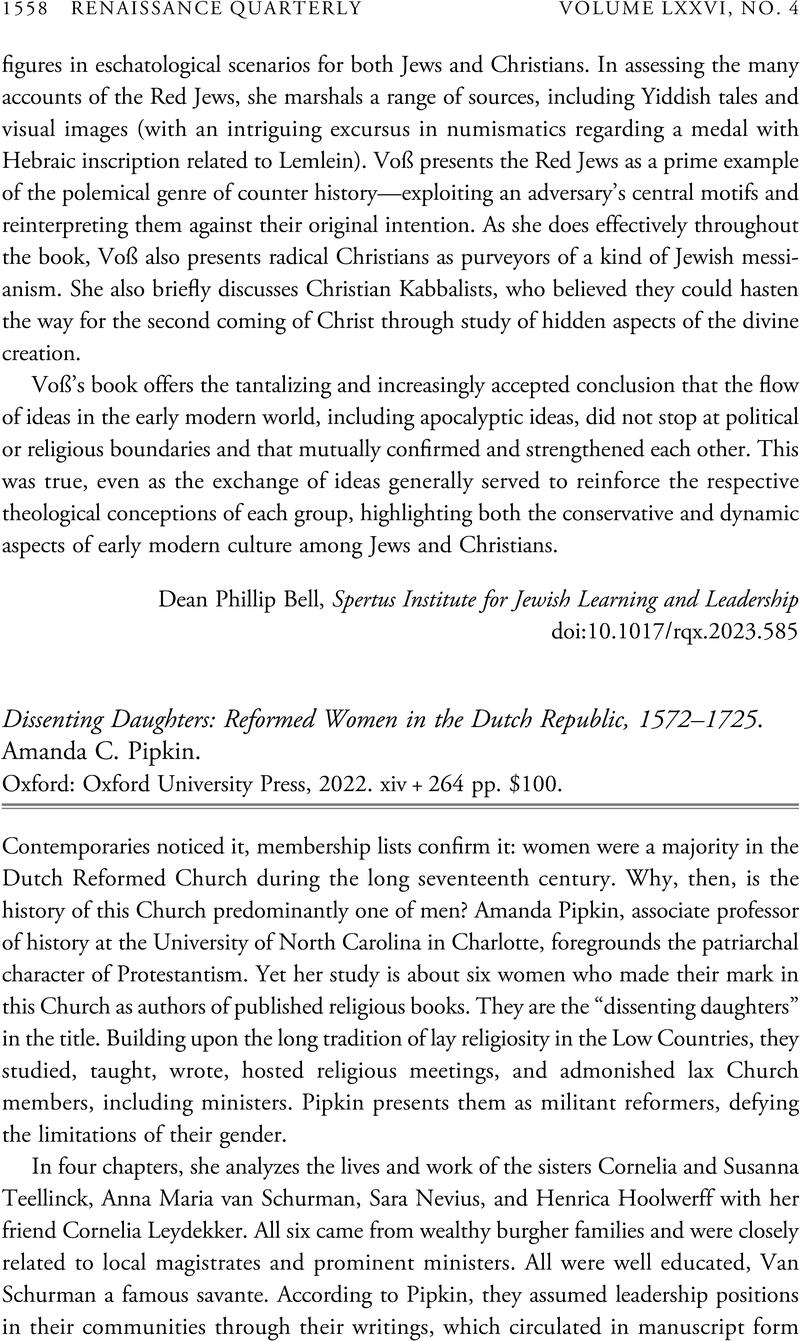No CrossRef data available.
Article contents
Dissenting Daughters: Reformed Women in the Dutch Republic, 1572–1725. Amanda C. Pipkin. Oxford: Oxford University Press, 2022. xiv + 264 pp. $100.
Review products
Dissenting Daughters: Reformed Women in the Dutch Republic, 1572–1725. Amanda C. Pipkin. Oxford: Oxford University Press, 2022. xiv + 264 pp. $100.
Published online by Cambridge University Press: 24 January 2024
Abstract
An abstract is not available for this content so a preview has been provided. Please use the Get access link above for information on how to access this content.

- Type
- Review
- Information
- Copyright
- Copyright © The Author(s), 2024. Published by Cambridge University Press on behalf of the Renaissance Society of America



